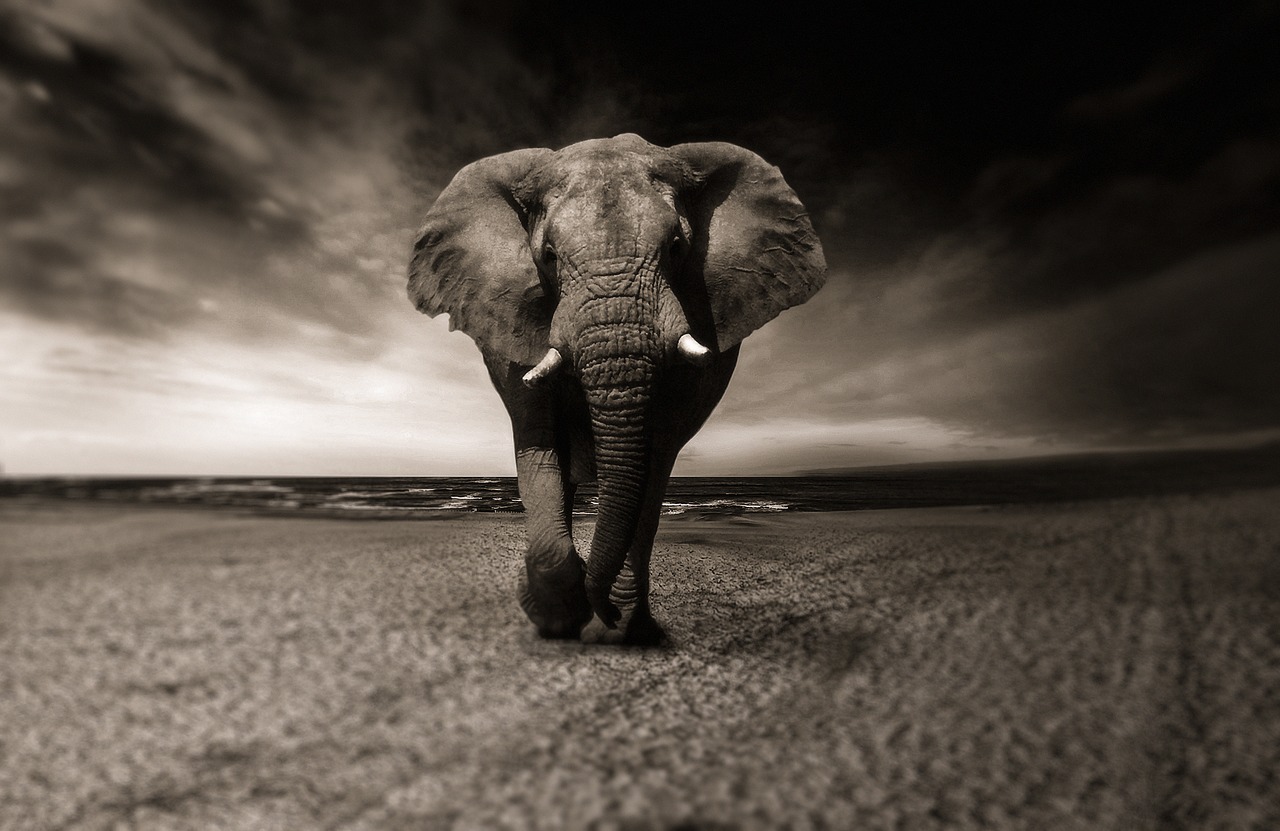Descriptions as Elephants: the Happy Medium.
There are a lot of odd rules floating around about descriptions (some of which are useful and others… not so much), but to form writing theories that any writer can apply to their own work without losing their personal style, we often need to step back from the “rules” and examine things more broadly.
There are two general directions from which one can approach a description.
Imagine this: a great beast with leathery skin and four legs like tree trunks. It has a slim tail, hidden behind its hulking mass of muscle and flesh, two great ears that hang off its head, flapping against its flabby neck. Its nose drops off its face like a snake and it blows great gusts of air through it, trumpeting to the heavens. Two of its otherwise flat teeth extend like swords out of its mouth, ready to spear any who threaten it. Its small eyes gleam with both cunning and kindness.
I could describe this creature in five sentences or in one word: Elephant.
Now the first method works for some situations and the second for others, but most of us, in most cases, want the happy medium.
There are three parts of this happy medium of description — the general, the detail, and the feeling — and each should be as active as possible.
(Was is the death of descriptions. If something is or was or will be it must also have motion, action, existence. It dances, sleeps, gleams, crashes, flicks, tugs, dangles, sprawls, languishes, weeps, heaves, parts, slinks, exists.)
1. The general – Elephant.
2. The detail – Tusks and ears. Or trunk and ears.
3. The feeling – The elephant charges, its deadly tusks gleaming in the firelight and beady eyes locked on its target. The ground shakes beneath it, embers flying in its wake. Or perhaps instead, The elephant moseys over, wiggling its floppy ears. It lips at her hair with the end of its trunk, leaving a glob of goopy hay smeared across her forehead.
And there you have it: an elephant.
